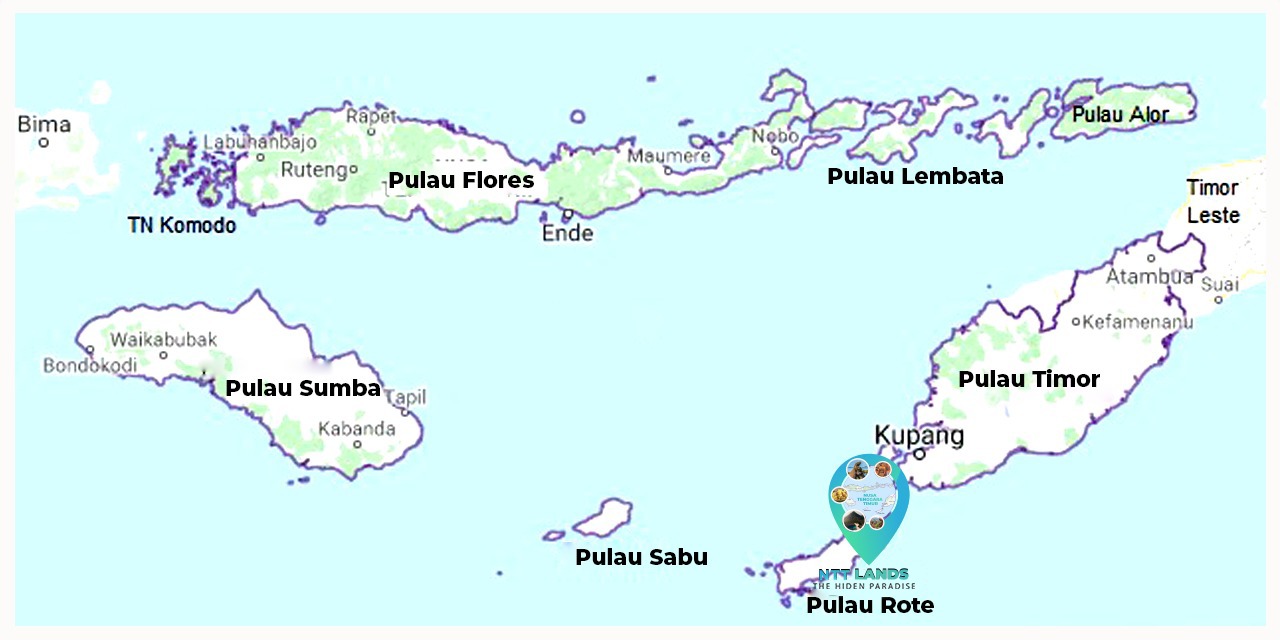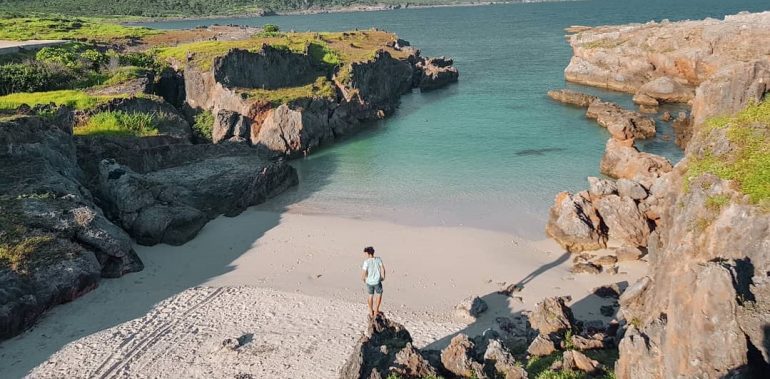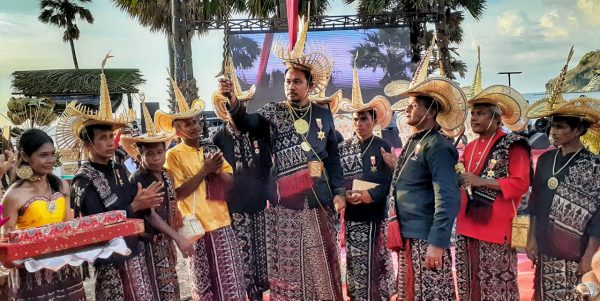


The Rote Islands, also called the Roti Islands, are an archipelago in the East Nusa Tenggara Province of Indonesia. These islands are the southernmost region of Indonesia.[2] This area is famous for the peculiarities of lontar cultivation, coastal nature tourism, sasando music, and Ti'i langga traditional hats.[3] The Rote Islands with the largest island, Rote Island, and the surrounding small islands have the status of a regency under the name Rote Ndao Regency through Law Number 9 of 2002. The Rote Archipelago consists of 96 islands, 6 of which are inhabited: Rote Island with an area of 97,854 Ha, Usu Island in the northeast with an area of 1,940 Ha, Nuse Island with an area of 566 Ha and Ndao Island with an area of 863 Ha and Do'o Island in the west with an area of 192 Ha, Landu Island in the south with an area of 643 Ha, and 90 other islands not inhabited by humans.[5] This region has a dry climate which is influenced by monsoons and the rainy season is relatively short (3-4 months). The northern and southern parts are low-lying beaches, while the central part is valleys and hills.
Some of the kings of Rote recorded in history are the kings of Tou Dengga Lilok. Tou Dengga Lilok's ancestors came from Bula Kay, in descending order: Bula Kay begat Loma Bula, Loma Bula gave birth to Ou Loma, Ou Loma begot Kadau Ou, Kadau Ou begot Kasu Kadau, Kasu Kadau begot Doitama Kasu, Doitama Kasu begot Tou Dengga Liloka.

Tou Dengga Lilok was crowned the King of Baa and his power covered Rote Baa during the Portuguese and Dutch colonial times. Tou Dengga Lilok begat Nduk and Bulakh. From the descendants of Nduk, the Ene clans emerged, including Panie, Dae Panie, Fola Panie, Foeh, Detaq, etc.
